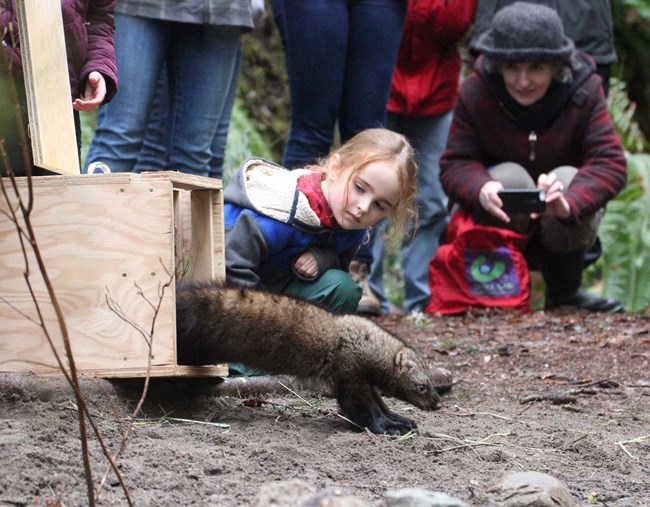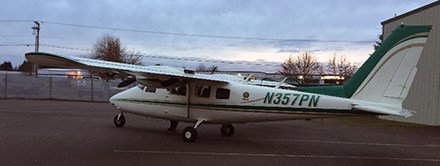
Paul Bannick, Conservation Northwest 
John Jacobson, WDFW The fisher (Pekania pennanti) is a medium sized carnivore belonging to the weasel family. Known for their skillful and ferocious hunting, fishers are the only animal able to effectively predate porcupines. In the food web, they are secondary consumers and therefore prey on small animals like snowshoe hare and mountain beaver, while larger carnivores prey upon them. These forest dwelling mammals depend upon old growth forests to access sufficient resting and denning trees that are crucial for their survival and reproduction. Fishers are comparable in size to a large house cat and have a distinct long bushy tail, short round ears and unique white patches on their chests. Fishers’ bodies appear low to the ground and they move with a bounding gate. If you see a fisher, please contact us to provide information on your observation. Your help is greatly appreciated! 
NPS/Jason Ransom Historically a common species in Washington, fishers were over-trapped to extinction due to their highly valuable fur. Even after decades of absence from the ecosystem, fisher habitat and their prey base remains intact and abundant, making them exceptional candidates for a population restoration project. Washington is now actively restoring the fisher population by translocating fishers from a healthy British Columbia population to the evergreen state’s landscape. In the first phase of this state-wide project, the Olympic Peninsula released 90 fishers to establish a population there. After its success, the second phase of the project is now underway by translocating fishers to the Cascades. Seven fishers were released on December 3, 2015 at the Cispus Learning Center near Randle, Washington, marking their return to the Washington Cascades Mountain Range. Over the next several years the National Park Service along with Washington Department of Fish and Wildlife and Conservation Northwest will work together to restore fishers and as of February 20, 2017, 69 fishers have been released at the Cispus Learning Center and at Mount Rainier National Park. The fisher restoration’s project goal is to release 80 fishers in the Southern Cascades followed by releasing 80 individuals in the Northern Cascades in order to establish a healthy and self- sustaining population of Washington fishers! 
NPS/Elissa Gordon To monitor released fishers, project biologists fly in a fixed-wing aircraft, listening for unique signals that each fisher sends out through their implanted transmitter. Tracking movements of each animal is an exciting process and enables scientists to discover important information about these forest carnivores. Using this technique, fishers have been observed crossing roads, rivers, and areas with little habitat! It also provides data on which individuals are currently alive, where they have settled, which individuals are near each other entering the breeding season, and so much more! Stay tuned to see what else project scientists discover during these fisher location flights and follow the link for more information on fishers in Washington and other fisher restoration project updates! http://wdfw.wa.gov/conservation/fisher/ Hosted by Washington Department of Fish & Wildlife Additional ResourcesCascade Fisher Reintroduction Project - Discover the partnerships that make the reintroduction project a success. |
Last updated: May 24, 2017
